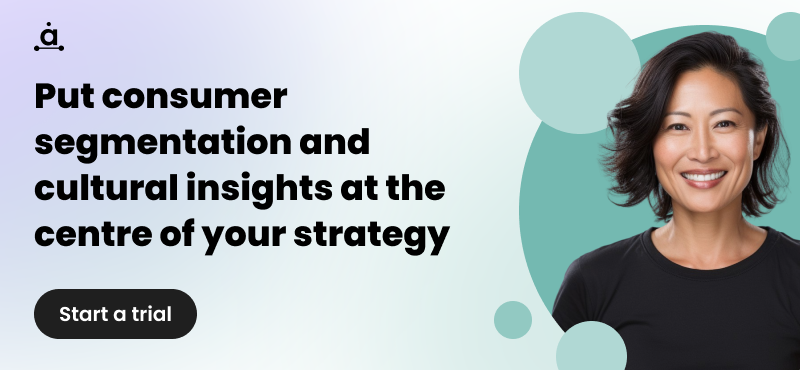Pourquoi l'intelligence de l'audience doit-elle être au cœur de la planification des médias ?
Quel rôle jouent les données sociales dans la stratégie de planification des médias ? Comment le social listening le soutient-il ? Danielle Johns, responsable de la stratégie d'audience chez Encore Digital Media au Royaume-Uni, nous a aidés à répondre à ces questions et à d'autres concernant ce domaine qui est devenu plus sophistiqué au cours des dernières années. Et l'intelligence d'audience est l'une des raisons de cette évolution.
"La connaissance de l'audience est essentielle et devrait être au cœur de toute stratégie de planification médiatique. C'est le fondement de tout plan média réussi", déclare Danielle, qui précise qu'une fois que les données initiales sur l'audience ont été recherchées et définies, il est possible de calculer la bonne combinaison de canaux, de formats et de stratégies de ciblage pour atteindre l'audience au bon moment et au bon endroit.
Tester différents messages créatifs avec des budgets basés sur des données
Danielle démontre son point de vue en partageant une histoire de réussite sur l'utilisation des données sociales et de l'écoute sociale en conjonction avec l'étude de marché traditionnelle pour fournir une véritable fenêtre sur le marché des acheteurs de véhicules électriques (VE). "Grâce à nos recherches, nous avons choisi les bonnes listes blanches et les bons PMP en nous basant sur les habitudes de consommation médiatique des utilisateurs de VE sur le marché. Nous avons également sous-segmenté le public en personas distincts", a-t-elle déclaré.
-1.png?width=300&name=Disen%CC%83o%20sin%20ti%CC%81tulo%20(11)-1.png)
Selon le stratège, ces personas ont permis de tester des messages créatifs distincts avec des budgets ajustés et fondés sur des données, "placés dans les endroits les plus pertinents sur le plan contextuel en analysant les sujets en vogue et en les utilisant dans nos stratégies de ciblage contextuel des mots clés".
La campagne que Danielle partage avec nous a été menée pour la Nissan Leaf, ciblant les personnes intéressées par les véhicules électriques pour les conducteurs de voitures de société, et a démontré l'efficacité de cette approche. "Nos stratégies contextuelles ont permis d'augmenter le CTR de 54 % par rapport à nos stratégies non contextuelles", nous dit-elle.
Le rôle de l'écoute sociale
Danielle définit cinq façons dont l'écoute sociale soutient la stratégie de planification des médias :
- L'écoute sociale pour analyser la consommation médiatique d'un public
- Intelligence contextuelle des mots-clés
- Taille de l'audience
Selon Danielle, l'évaluation de la conversation en ligne peut aider à déterminer le budget à allouer à un produit ou à une stratégie particulière, et même à l'ensemble des pays.
"La conversation est-elle dominée par les Allemands ? Dans l'affirmative, devrions-nous consacrer plus d'argent à ce domaine ? Ou bien devrions-nous l'exclure complètement et nous concentrer sur les domaines sous-représentés ? Cela peut ne pas sembler évident, en particulier pour les produits B2B, mais les données sociales peuvent soutenir ce processus de réflexion", a-t-elle déclaré.
- Analyse des concurrents
- Quels sont les messages et les produits qu'ils diffusent sur leurs canaux sociaux ?
- Comment pouvons-nous agir de manière à contrer ou même à détourner leur message ?
- Où nos concurrents sont-ils les plus visibles en ligne ?
- Brand uplift
"Avec les bons rapports, certaines plateformes de social listening peuvent nous aider à comprendre si la marque ou ses produits bénéficient d'un buzz plus important lors d'une campagne publicitaire clé", a déclaré Danielle. Selon elle, ce type de mesure permet de calculer le retour sur investissement lorsque les mesures numériques traditionnelles telles que la conversion ne sont pas suffisantes ou même possibles.
La boîte à outils de Danielle John
Nous avons demandé à Danielle quelles étaient les plateformes qu'elle appréciait le plus. "Les plateformes d'intelligence d'audience comme Audiense sont parmi les plus appréciées à l'heure actuelle. Nous utilisons également Awario et Brandwatch en fonction du cas d'utilisation".
Elle nous a expliqué que la valeur dérivée de ces plateformes est souvent directement liée au temps qu'ils consacrent à la préparation des requêtes et à la définition des paramètres. "Il s'agit d'un processus itératif d'essais et d'erreurs.
Le processus de planification des médias a évolué depuis le "big pitch".
Aujourd'hui, les marques ne veulent plus se contenter d'exécuter des tactiques uniques, mais veulent que les agences jouent un rôle plus stratégique. Nous avons demandé à Danielle comment ce changement d'attitude, qui consiste à passer du statut de prestataire de services à celui de conseiller en solutions, s'opère en pratique au quotidien dans une agence et comment Encore Digital Media fait face à ce nouveau paradigme.
Selon elle, "le processus de planification des médias a évolué depuis le "big pitch" et la boîte noire des processus décisionnels qui guident l'exécution par la suite". Selon Danielle, conseiller les meilleures solutions stratégiques signifie que les agences doivent souvent poser plus de questions, collaborer avec le client et, surtout, garder les budgets fluides. "Heureusement, nous travaillons dans des canaux de soumission qui facilitent l'ajustement de l'activité au fur et à mesure que nous apprenons".
Elle a ajouté qu'il y avait également un dialogue plus ouvert sur l'éducation. "L'agence ne connaît pas tout de la marque et la marque ne connaît pas les spécificités de l'exécution et de l'optimisation. Nos partenariats les plus réussis aujourd'hui voient les egos diminuer et les deux entreprises travailler à la réalisation d'un objectif commun".
Audiense s'engage à avoir une sélection plus diversifiée et inclusive de contributeurs et de leaders d'opinion de l'industrie dans nos articles. Si vous souhaitez collaborer avec nous, veuillez envoyer un courriel à leticia@audiense.com en indiquant vos domaines d'expertise et/ou les sujets que vous préférez commenter.
Photo par Max Sandelin sur Unsplash.






